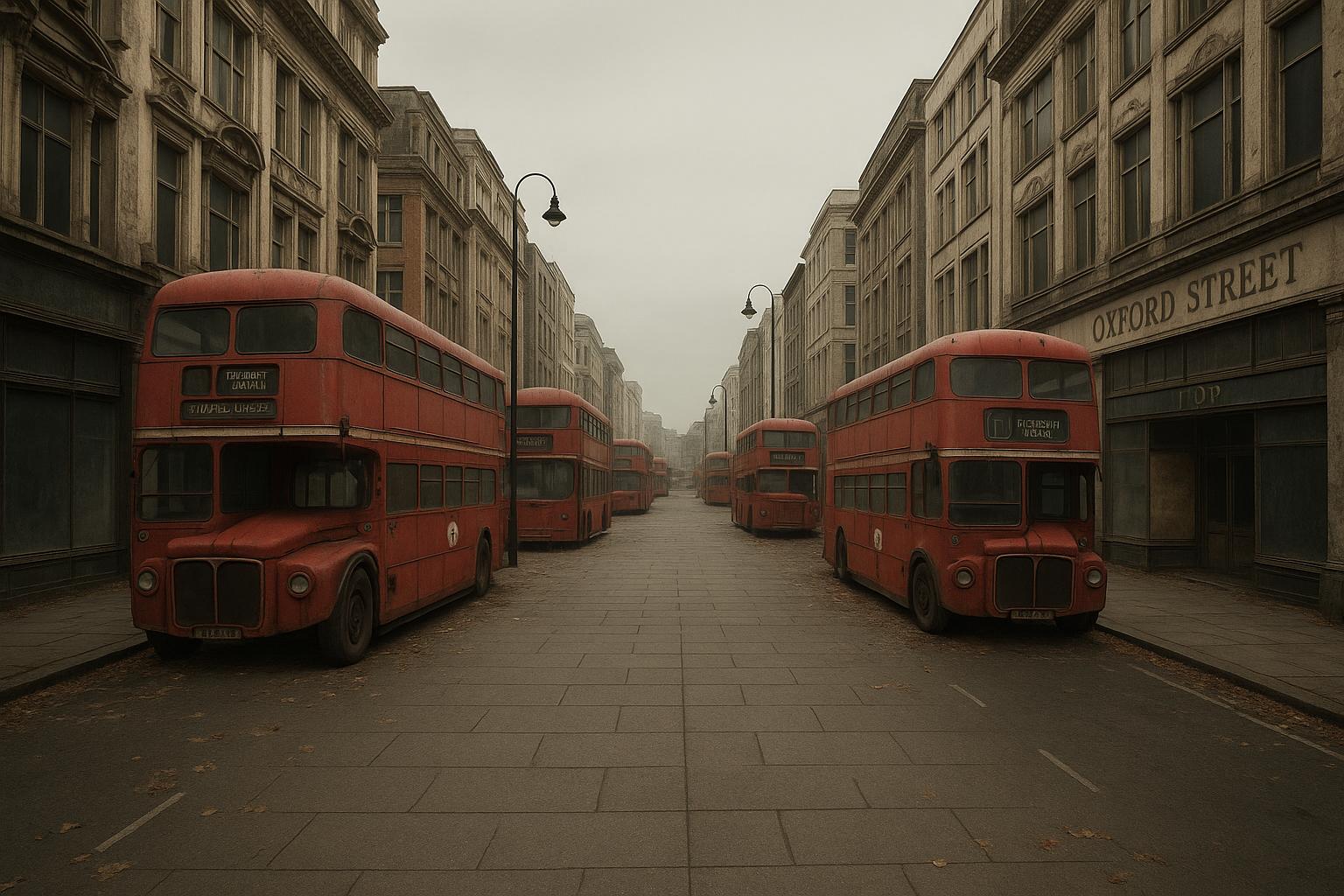The Mayor of London, Sir Sadiq Khan, has marked a significant step towards pedestrianising Oxford Street by holding a one-day traffic ban trial on a key section of the iconic shopping thoroughfare. On Sunday, vehicles were prohibited from accessing the half-mile stretch between Oxford Circus and Orchard Street between noon and 20:00 BST. The mayor described the event as "the day the fight back began to rescue this street," signalling his determination to transform Oxford Street into a pedestrian-friendly zone.
Oxford Street, one of the world's busiest shopping streets with around half a million visitors daily, has faced mounting challenges over recent years. Major retail closures and growing competition from online shopping have contributed to a decline in foot traffic and economic activity. Sir Sadiq Khan’s plan is part of a broader initiative to rejuvenate the area, making it a vibrant, accessible place for shopping, leisure, and outdoor events. Drawing inspiration from successful pedestrian zones like Times Square in New York and La Rambla in Barcelona, the plan seeks to boost visitor numbers and economic prosperity.
The one-day trial formed part of preparations for a more comprehensive pedestrianisation plan that would ban vehicles from a 0.7-mile stretch extending between Oxford Circus and Marble Arch, with potential expansion towards Tottenham Court Road. This ambitious project, which has been in development for more than two decades, awaits government approval to establish a new Mayoral Development Corporation that would grant the mayor necessary planning powers to implement the changes. It is estimated to cost around £150 million, with financial backing anticipated from local businesses, private investors, and new revenue streams generated by the redevelopment.
Public opinion appears broadly favourable. A recent public consultation revealed majority support, with about two-thirds of respondents endorsing the plan. The trial event attracted pedestrians who appreciated the opportunity to stroll without the usual vehicle congestion. Grace and Tom Brown, two visitors, expressed strong support, saying they would prefer the area to remain traffic-free permanently, noting how the change encourages safer, more relaxed shopping experiences. Passer-by Kish Sha remarked positively on the initiative, highlighting the vibrant atmosphere and the sensible redirection of buses and emergency vehicles to alternative routes nearby.
Yet, the plan has not been without controversy. Some local residents and businesses have voiced concerns about the displacement of traffic onto narrower side streets that may not accommodate the increased flow, raising fears about congestion and safety. Conservative Westminster councillor Tim Barnes warned of negative impacts on local communities and businesses from increased traffic on side roads, emphasizing that emergency and delivery vehicles would be forced into these smaller streets. The Soho Society echoed worries about access for individuals with mobility issues or heavy shopping loads, highlighting potential challenges for inclusivity under pedestrianisation.
Sir Sadiq Khan acknowledged these concerns, assuring that the authorities had consulted residents and would continue to work closely with local communities, retailers, and landowners to mitigate adverse effects. He emphasised the aim of restoring Oxford Street's "previous glory" as a clean, accessible, and vibrant public space. The mayor also confirmed ongoing efforts to secure additional powers from the government to better regulate licensing for al fresco dining and other activities that enhance London’s hospitality and retail sectors.
The mayor’s latest push for pedestrianisation contrasts with previous attempts to make the area traffic-free. A similar plan proposed in 2018 was blocked by the Conservative-run Westminster City Council due to strong local opposition. At that time, Sir Sadiq Khan labelled their decision a "betrayal," remaining committed to revitalising the street. More recently, in April 2025, accusations emerged of a "mayoral power grab" related to plans to shift control of Oxford Street's planning from Westminster Council to a mayoral development corporation, reflecting underlying political tensions surrounding the project.
Support from significant political figures, such as Deputy Prime Minister Angela Rayner, has bolstered the initiative. Rayner highlighted the pedestrianisation’s potential to "drive growth by creating new jobs, generating economic activity, and giving a much-needed boost to London’s night-time economy." This aligns with the mayor’s vision of a revitalised Oxford Street as an internationally renowned, world-class destination.
The project’s implementation hinges on securing government approval and finalising detailed traffic management plans, particularly to manage bus routes and emergency vehicle access. Sir Sadiq Khan has expressed intent to proceed as quickly as possible once permissions are granted, underscoring the urgency to address Oxford Street’s economic and social challenges.
Overall, the one-day car-free trial on Oxford Street offers a tangible glimpse of a future where London's renowned shopping street is safer, cleaner, and more welcoming for pedestrians. Whether this vision fully materialises will depend on balancing the varied interests of local residents, businesses, and visitors, alongside overcoming political hurdles and logistical challenges inherent in such a large-scale urban redevelopment.
📌 Reference Map:
- Paragraph 1 – [1]
- Paragraph 2 – [1], [2], [3], [6]
- Paragraph 3 – [2], [3], [6]
- Paragraph 4 – [1], [3]
- Paragraph 5 – [1]
- Paragraph 6 – [1], [7]
- Paragraph 7 – [1], [7]
- Paragraph 8 – [1], [4], [6]
- Paragraph 9 – [1], [6]
- Paragraph 10 – [1], [2], [3], [6]
Source: Noah Wire Services
